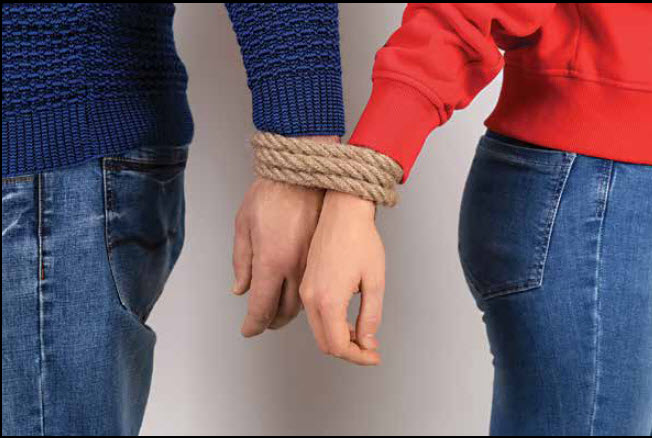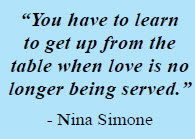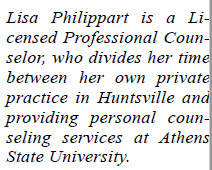The Ties Of Codependence
 By: Lisa Philippart
By: Lisa Philippart
I have been seeing a pattern recently in the issues being presented in my private practice. And I’m not sure whether it is causal or just related to the effects of the pandemic. This phenomenon is called codependency, and I thought it might be helpful to share some information with you on this topic. The term gets thrown around without much explanation or clarification. First a little background: Codependency is a learned behavior that can be passed down from one generation to another. It is an emotional and behavioral condition that affects your ability to have a healthy, mutually satisfying relationship. Codependency is also known as relationship addiction, because those in a codependent relationship often form or maintain that relationship in a one-sided, emotionally destructive and/or abusive way. Codependent behavior is learned by watching and imitating family members or partners who display this type of behavior.

Let’s take a look at the dysfunctional family and how that might lead to codependency. A dysfunctional family is one whose members suffer from fear, anger, pain, shame, or guilt that is ignored or denied. Often these families struggle with addictions, physical or emotional abuse, and/or someone suffering from a chronic mental or physical illness. These families do not acknowledge that problems exist. They don’t talk about them or confront them. This causes family members to learn to repress emotions and disregard their own needs. They describe themselves as survivors and develop behaviors that help them to deny, ignore, or avoid difficult emotions. They will detach by not talking, not touching, not confronting, not feeling, and not trusting. The co-dependent person will typically sacrifice his or her own needs to care for others in the family who are ill or addicted. When this happens the codependent person will lose contact with his or her own needs, desires, and sense of self.

Codependents have low self-esteem and look for anything outside of themselves to make them feel better. They end up finding it hard to “be” themselves. They have good intentions (usually) by taking care of the family member who is struggling, but the caretaking becomes compulsive and defeating. The codependent person often takes on a martyr’s role. For example, the wife may cover for an alcoholic husband, a mother may make excuses for a defiant child, or a father may “pull some strings” to keep a child from being punished. These repeated rescue attempts allow the cared-for individual to continue either on a destructive path or to become even more dependent on the unhealthy caretaker. As the reliance increases, the co-dependent develops a sense of satisfaction from being “needed.” Taken to the extreme, when the caretaking becomes compulsive, the codependent feels trapped in the relationship, unable to break away from the cycle of behavior that causes it.
Here are some characteristics of codependent people:
Exaggerated sense of responsibility for the actions of others
A tendency to confuse love and pity (loving someone they feel sorry for then rescue)
Doing more than their share all the time
Unhealthy dependence on relationships (doing anything to stay in that relationship to avoid feeling abandoned)
Extreme need for approval and recognition
A compelling desire to control others
Difficulty identifying feelings
Problems with intimacy/boundaries
Lack of trust in self or others

Here are some questions to help identify signs of codependency:
Do you keep quiet to avoid arguments?
Are the opinions of others more important than your own?
Do you doubt your ability to be who you want to be?
Are you uncomfortable expressing your true feelings to others?
Do you feel like a bad person when you make a mistake?
Do you think family/friends would be unable to survive without your constant efforts?
Are you confused about who you are or where you are going with your life?
Do you have trouble asking for help?
Do you have difficulty talking to people in authority?
Do you have so many things going at once that you can’t do justice to any of them?
If you identify with several of the above characteristics or are dissatisfied with yourself or your relationships, stay tuned for my next article on how to treat codependency.
By: Lisa Philippart
Licensed Professional Counselor